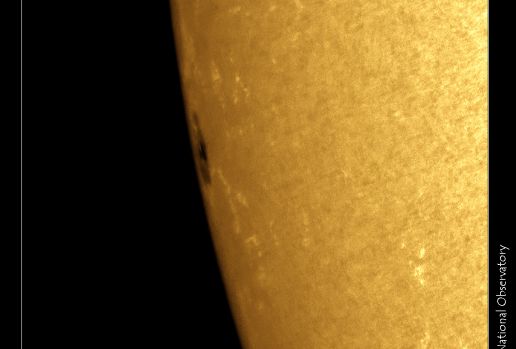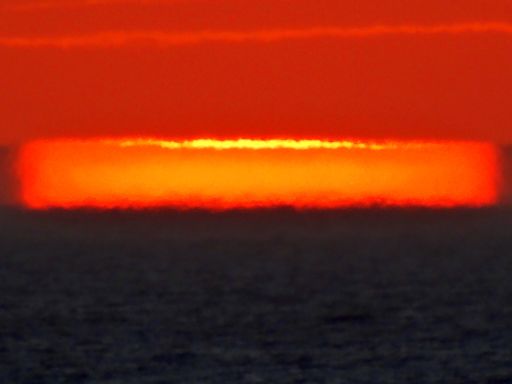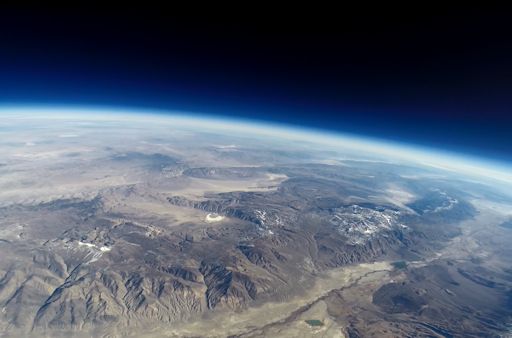When is the best time to see auroras? Where is the best place to go? And how do you photograph them? These questions and more are answered in a new book, Northern Lights - a Guide, by Pal Brekke & Fredrik Broms. | | |
CHINESE MOON ROVER IN TROUBLE: China's moon rover, the Jade Rabbit, which made an historic landing in Sinus Iridum (the Bay of Rainbows) on Dec. 14th, is in trouble. Night is falling over the rover's landing site, and the rover should be going into hibernation to preserve power. China's space agency is reporting, however, that a "mechanical anomaly" may be interfering with the hibernation process. If so, the Jade Rabbit might not survive the extreme cold (-180 C) it is about to experience during two weeks of lunar night. Even if the rover fails, the mission is a success for China, which has joined the exclusive club of nations that have landed on the Moon.
OLD SUNSPOT RETURNS: The southeastern limb of the sun is crackling with C- and M-class solar flares. These explosions herald the return of old sunspot AR1944, which produced many strong flares earlier this month. This morning at the Langkawi National Observatory in Malaysia, astronomer Karzaman Ahmad photographed the active region rotating into view:

For the past two weeks AR1944 has been transiting the farside of the sun. During that time it probably decayed and no longer retains the magnetic complexity that made it a potent source of space weather in early January. We will find in the days ahead as the sunspot rotates into view for magnatic analysis. Stay tuned. Solar flare alerts: text, voice
Realtime Space Weather Photo Gallery
RECTANGULAR SUN: No, it's not an alien planet. It's just Rio. On Jan. 23rd, Helio C. Vital looked out over the ocean from Rio de Janeiro, Brazil, and saw something out of this world--a rectangular sun:

As alien as it appeared, this was a phenomenon of Earth. "An inversion air layer next to the sea surface caused the top of the setting sun to acquire unusual shapes. In a matter of tens of seconds, it went from a saucer to a cup, then to a rectangle," says Vital.
Atmospheric optics expert Les Cowley explains further: "A mirage morphed the sun into a rectangular block brighter at its top edge. It is even more complex than it seems. Sun rays are deflected (refracted) through the different temperature layers of a temperature inversion, cold air trapped beneath warmer air, to form not one sun image but three or even more. The topmost bright strip is the sun grazing the top of the inversion layer. Beneath it are two or more sun images, half of them rising and the others descending. They overlap to form the rectangle. Other shots show the separate sun images."
"Look for these mock-mirages and their green flashes when the horizon shows a dark band of a temperature inversion," he advises. "But take care and never ever use binoculars or a telescope. Magnified sunlight can cause serious eye damage."
SPACE WEATHER BALLOON, LAUNCHED AND RECOVERED: Yesterday, the students of Earth to Sky Calculus launched a suborbital helium balloon from Bishop, California, and recovered the payload hours later from a nearby canyon. The goal of the mission was to measure high-energy radiation levels in the stratosphere. Those data are being reduced now. The students also captured panoramic images of California's epic drought:

So much for the Golden State. The landscape of California is remarkably brown as the driest winter in more than a century unfolds. The drought is so bad that the city of Bishop, where the students go to school, looks like a settlement on the planet Mars: image.
"Up and down California, from Oregon to Mexico, it's dry as a bone," comments JPL climatologst Bill Patzert. "To make matters worse, the snowpack in the water-storing Sierras is less than 20% of normal for this time of the year."
Indeed, the towering Sierras, only sparsely covered by crusty month-old snow, lack their usual white reflectance in many of the group's edge of space photos. Not much water will be flowing from those peaks to urban areas when the snow melts in spring. Water rationing and wildfires are likely this summer.
On the bright side, launching the balloon was lots of fun! Stay tuned for updates as the radiation data are analyzed.
Realtime Supernova Photo Gallery
Realtime Aurora Photo Gallery
Every night, a network of NASA all-sky cameras scans the skies above the United States for meteoritic fireballs. Automated software maintained by NASA's Meteoroid Environment Office calculates their orbits, velocity, penetration depth in Earth's atmosphere and many other characteristics. Daily results are presented here on Spaceweather.com.
On Jan. 26, 2014, the network reported 11 fireballs.
(11 sporadics)

In this diagram of the inner solar system, all of the fireball orbits intersect at a single point--Earth. The orbits are color-coded by velocity, from slow (red) to fast (blue). [Larger image] [movies]
On Jan. 24, 2014, the network reported 10 fireballs.
(10 sporadics)

In this diagram of the inner solar system, all of the fireball orbits intersect at a single point--Earth. The orbits are color-coded by velocity, from slow (red) to fast (blue). [Larger image] [movies]
Potentially Hazardous Asteroids (
PHAs) are space rocks larger than approximately 100m that can come closer to Earth than 0.05 AU. None of the known PHAs is on a collision course with our planet, although astronomers are finding
new ones all the time.
On January 27, 2014 there were 1453 potentially hazardous asteroids.
Notes: LD means "Lunar Distance." 1 LD = 384,401 km, the distance between Earth and the Moon. 1 LD also equals 0.00256 AU. MAG is the visual magnitude of the asteroid on the date of closest approach. | | The official U.S. government space weather bureau |
| | The first place to look for information about sundogs, pillars, rainbows and related phenomena. |
| | Researchers call it a "Hubble for the sun." SDO is the most advanced solar observatory ever. |
| | 3D views of the sun from NASA's Solar and Terrestrial Relations Observatory |
| | Realtime and archival images of the Sun from SOHO. |
| | from the NOAA Space Environment Center |
| | the underlying science of space weather |

